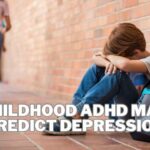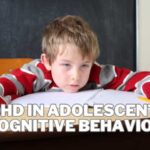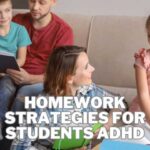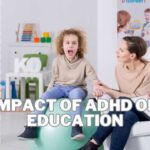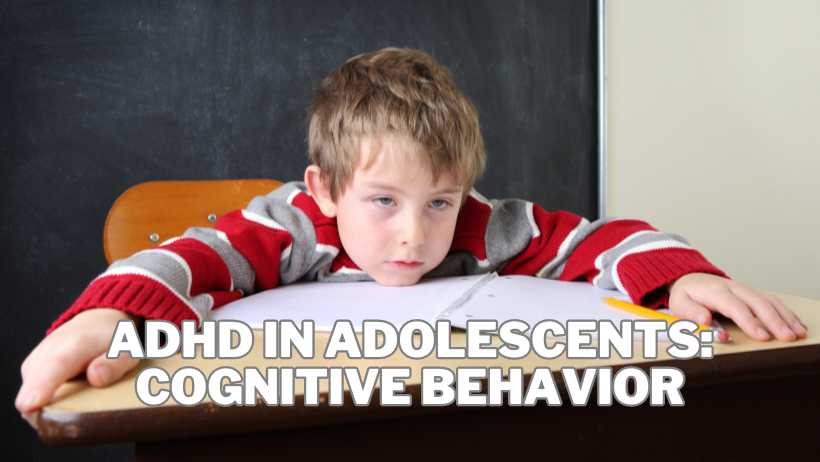
Discover how Cognitive Behavioral Therapy (CBT) and stimulant medication can help adolescents with ADHD.
Learn about the benefits and potential side effects of each treatment option. Find out why a combination of CBT and medication may provide the best approach. Make informed decisions for ADHD treatment.
In a recent study comparing treatment options for adolescents with ADHD and substance abuse issues, it was found that both Cognitive Behavioral Therapy (CBT) and medication (specifically, Concerta) led to similar reductions in ADHD symptoms.
However, the group that was treated with Concerta experienced more side effects, such as abdominal discomfort and increased heart rate. This study highlights the potential effectiveness of CBT as an alternative treatment for ADHD, but it is often overlooked in favor of quick-fix solutions like medication.
It is important to consider non-medication alternatives and consult with your healthcare provider before trying out new treatments. Unfortunately, some alternative programs lack scientific evidence to support their claims. Nevertheless, there are non-drug effective programs available, such as Total Focus, which has been recommended by the National Institute of Mental Health and CHADD.
ADHD in Adolescents: Cognitive Behavioral Therapy and Stimulants
Attention Deficit Hyperactivity Disorder (ADHD) is a neurodevelopmental disorder that affects many adolescents worldwide. It is characterized by symptoms such as inattention, hyperactivity, and impulsivity. ADHD can have a significant impact on academic performance and daily functioning, making it crucial to find effective treatment options for adolescents with ADHD.
Two commonly used treatment options for ADHD in adolescents are Cognitive Behavioral Therapy (CBT) and stimulant medication. In this article, we will explore the background of ADHD in adolescents, the principles and benefits of CBT, the effectiveness of stimulant medication, and the potential of combining CBT and medication for ADHD treatment.
Background on ADHD in Adolescents
ADHD is commonly diagnosed in childhood, but it can persist into adolescence and adulthood. According to research, the prevalence of ADHD in adolescents ranges from 5% to 10% worldwide. Boys are more likely to receive an ADHD diagnosis than girls, with a ratio of approximately 3:1.
Symptoms of ADHD in adolescence can include difficulties with organization, time management, and impulse control. These symptoms can significantly impact academic performance, social interactions, and overall quality of life. Adolescents with ADHD are also at higher risk of developing comorbid conditions such as substance abuse, anxiety, and depression.
Understanding Cognitive Behavioral Therapy (CBT)
Cognitive Behavioral Therapy (CBT) is a form of psychotherapy that focuses on identifying and modifying negative thought patterns and behaviors. It aims to help individuals develop healthier coping mechanisms and improve their overall psychological well-being.
In the context of ADHD, CBT for adolescents typically involves helping them understand how their thoughts and behaviors contribute to their symptoms. It teaches them skills to manage their impulsivity, improve their organizational abilities, and enhance their self-regulation.
Benefits of Cognitive Behavioral Therapy for ADHD
CBT has been found to offer several benefits for adolescents with ADHD. Firstly, it helps reduce the severity of ADHD symptoms, including inattention, hyperactivity, and impulsivity. Through CBT, adolescents learn strategies to manage their symptoms, leading to improved self-control and better overall functioning.
Another benefit of CBT is the enhancement of coping skills. Adolescents with ADHD often struggle with emotional regulation, frustration tolerance, and stress management. CBT equips them with tools and techniques to better handle these challenges, leading to increased resilience and adaptive coping mechanisms.
Furthermore, CBT helps in the development of executive functioning skills, such as planning, organization, and time management. These skills are often impaired in individuals with ADHD and can significantly impact academic performance and daily functioning. By targeting these areas, CBT contributes to improved functioning and overall success for adolescents with ADHD.
Lastly, CBT has demonstrated long-term benefits and the maintenance of treatment effects. Studies have shown that the skills acquired through CBT continue to be effective even after treatment concludes. This is particularly crucial for adolescents, as they transition into adulthood and face new challenges in various domains of life.
Effectiveness of Stimulant Medication for ADHD
Stimulant medication, such as methylphenidate (Ritalin) or amphetamine salts (Adderall), is commonly prescribed for individuals with ADHD. These medications work by increasing the availability of specific neurotransmitters in the brain, leading to improved attention, focus, and self-regulation.
Research has consistently shown that stimulant medication is effective in reducing the core symptoms of ADHD, including inattention, hyperactivity, and impulsivity. Many studies have demonstrated significant improvements in academic performance, classroom behavior, and overall quality of life for adolescents with ADHD who take stimulant medication.
Potential Side Effects of Stimulant Medication
While stimulant medication can be highly effective, it is essential to consider the potential side effects. Common side effects include decreased appetite, difficulty sleeping, and irritability. These side effects are usually mild and tend to diminish over time.
However, there are also more serious side effects and risks associated with stimulant medication. These can include increased heart rate, elevated blood pressure, and, in rare cases, cardiac events. It is crucial for adolescents taking stimulant medication to be closely monitored by a healthcare professional to ensure their safety and well-being.
Comparing CBT and Stimulant Medication as Treatment Options
When considering treatment options for ADHD in adolescents, it is essential to understand the differences between CBT and stimulant medication. CBT is a non-pharmacological approach that focuses on teaching skills and strategies to manage ADHD symptoms. It does not involve taking any medication and can be applied across various domains of life.
On the other hand, stimulant medication directly targets the neurochemical imbalances associated with ADHD. It provides rapid relief of symptoms and can significantly improve attention, focus, and self-regulation. However, it does not address the underlying psychological factors contributing to ADHD symptoms.
Choosing between CBT and stimulant medication should be based on individual needs, preferences, and considerations. Some adolescents may respond well to one treatment modality, while others may benefit most from a combination of both approaches. It is crucial to personalize treatment plans and involve the adolescent, their family, and healthcare professionals in the decision-making process.
Combining CBT and Stimulant Medication for ADHD
Research has shown that a combination of CBT and stimulant medication can be highly effective in treating ADHD in adolescents. By combining these approaches, individuals can benefit from both the skill-building and symptom reduction aspects of treatment.
The rationale for combining CBT and stimulant medication is to address the multifaceted nature of ADHD. CBT targets the psychological and behavioral aspects of ADHD, while medication addresses the neurochemical imbalances. This integrated approach can lead to more comprehensive and long-lasting improvements in functioning and overall well-being.
When combining CBT and medication, it is essential for the therapist and the prescribing doctor to collaborate closely. This collaboration ensures that the treatment plan is cohesive and tailored to the individual’s specific needs. Regular monitoring and adjustment of treatment goals may be necessary to optimize outcomes.
Studies on the Efficacy of CBT and Stimulants
Numerous studies have investigated the efficacy of CBT and stimulant medication in treating ADHD in adolescents. These studies have provided valuable insights into the effectiveness of these treatment modalities and the potential benefits of their combination.
One review of relevant studies found that both CBT and stimulant medication were effective in reducing ADHD symptoms and improving overall functioning. The review also highlighted the importance of personalized treatment plans, as individuals may respond differently to different interventions.
Comparative studies have examined the relative efficacy of CBT and stimulants in isolation and in combination. These studies have shown that while both approaches can lead to symptom reduction, their combination often produces greater improvements compared to either treatment alone.
Long-term follow-up studies have demonstrated the sustained benefits of CBT and stimulant medication. Even after treatment concludes, individuals who have received CBT and/or medication continue to experience long-term symptom reduction and improved functional outcomes.
It is essential to acknowledge the limitations of the existing research and the need for future directions. Further studies are needed to explore factors that may influence treatment outcomes, such as age, gender, comorbidities, and individual differences. Additionally, research should continue to focus on the long-term effects of combined treatment and potential predictors of treatment response.
Considerations for Choosing the Right Treatment Approach
When choosing the right treatment approach for ADHD in adolescents, several considerations should be taken into account. It is crucial to consider the severity of symptoms, the impact on daily functioning, and the individual’s preferences and goals. Additionally, comorbid conditions, treatment history, and potential side effects should be carefully evaluated.
Collaborative decision-making involving the adolescent, their family, and healthcare professionals is paramount. Each individual’s unique needs and circumstances should guide the selection of treatment options. Flexibility and openness to adjustments throughout the treatment process are essential to ensure the best possible outcomes.
Conclusion and Recommendations
ADHD in adolescents can significantly impact academic performance, social interactions, and overall quality of life. Treatment options such as Cognitive Behavioral Therapy (CBT) and stimulant medication offer promising results in reducing ADHD symptoms and improving daily functioning.
CBT provides benefits such as symptom reduction, enhancement of coping skills, development of executive functioning, and long-term maintenance of treatment effects. Stimulant medication has demonstrated effectiveness in improving attention, focus, and self-regulation. Both treatment options can be effective on their own, but a combination of CBT and medication may provide the most comprehensive approach to ADHD treatment.
Individualized treatment plans, collaborative decision-making, and continued monitoring and support are crucial in ensuring the best possible outcomes. Promoting awareness and education about ADHD and treatment options can help reduce stigma and empower adolescents and their families to make informed decisions about their care.
In conclusion, ADHD in adolescents can be effectively managed through the integration of Cognitive Behavioral Therapy, stimulant medication, and personalized treatment plans. Through a comprehensive and holistic approach, adolescents with ADHD can thrive and reach their full potential.














